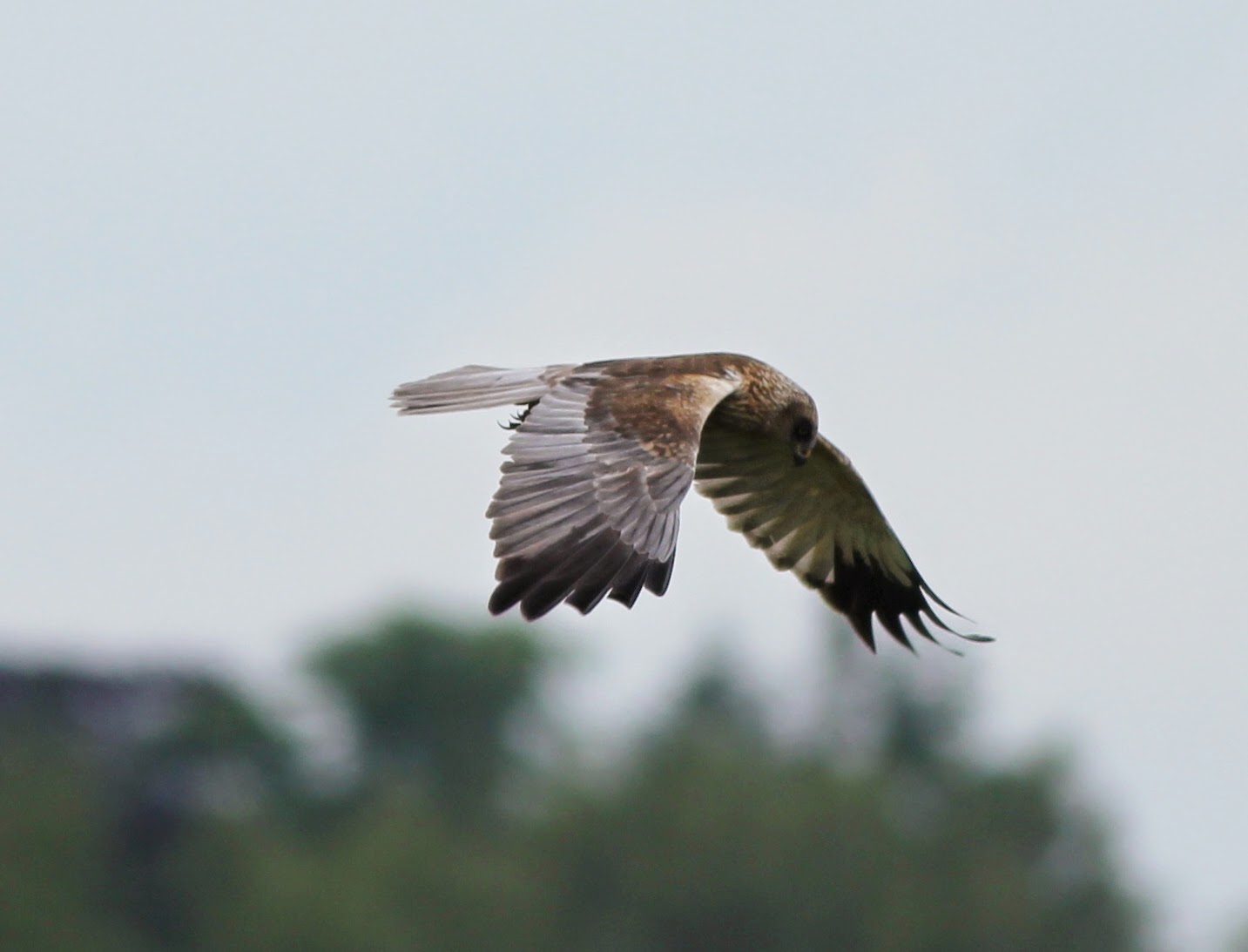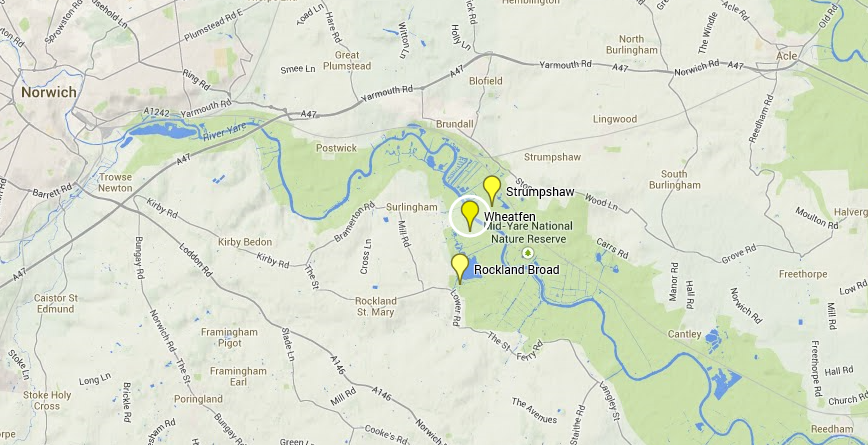 |
| Cley Marshes |
I saw my first ever
Avocets at
Cley Marshes, back in the 1980s when they were still a relatively rare sight in the UK. Thrilled as I was to see these, at the time, exotic looking waders actually nesting on these shores, my strongest memories of that time were of the place itself. Along with
Titchwell and
Blakeney Point this stretch of Norfolk coastline, a watery land of reedbed, dune and shingle had a remote and timeless feel then that thankfully still persists today.
The
Avocets are still there of course and in much bigger numbers, back in the late 70s a nesting Avocet in the UK was big news - now there are 1500 pairs and increasing still. Climate change has undoubtedly propelled this dainty wader northwards as a breeding bird but let's not forget the role played by the RSPB in creating and managing the habitat they like.
I say 'dainty' but
Avocets are feisty too. We saw several 'mobbing' episodes during our time at Cley and nearly all of them involved
Avocets!
 |
Avocets, nest prospecting, Cley.
|
 |
| Avocets mobbing a Grey Heron, Cley |
 |
| Avocet mobbing a Marsh Harrier |
Both
Marsh Harrier and
Grey Heron will gladly pluck a young
Avocet from the ground so the attacks are worthy ones, though sometimes the harried fights back and we almost had feathers flying at the end of this one!
We spent an evening and an early morning here ...thus avoiding having to pay
Norfolk Wildlife Trust and a little protest to NWT about them being the only county that charges Wildlife Trust members for visiting their reserves (come on Norfolk ... get with the programme!)
 |
Reed Bunting - lovely singing male, great early morning sunlight!
|
Every picture tells a story so they say, and I do believe that - there's a tale to be had behind just about every picture I take. As I mentioned last time though, with so many pictures taken between the two of us, in the main the raconteur in me will have to take a back seat to make this a digestible post! So here's a few Cley highlights. As you will see we were blessed with some good early morning and evening sunshine ......
 |
Male Linnet - same gorgeous light and beautifully posed!
|
 |
| Sedge Warbler - so many chattering in the reeds I would have gutted if I didn't get a half decent shot! |
 |
Reed Warbler - distant shot across one of the lagoons; just as many around but I was disappointed not to get a better shot.
|
 |
| Male Shoveller - caught in that 'golden light' evening sunshine |
 |
| That's me probably photographing that Shoveller! |
The viewing at
Cley is second to none, several good hides and of course the boardwalks themselves often provide discreet photo opportunities.
 |
| Me again - taking advantage of another man's equipment and seeing what a Wood Sandpiper looks like through £1500 worth of telescope! |

Sadly the
Wood Sandpiper (best bird of the day!) flew off before anyone had a chance to photograph it but I did get a distant shot of some of the
Little Stints that were also present from this hide.
 |
| Grainy old zoom crop but enough to id them as Little Stints! |
Very 'bird laden' this post I know but
Cley is after all a mecca for birdwatchers and has been for decades and still is. The same
tidal surge that hit
Spurn Point and various other coastal spots on the east coast last December also did a fair amount of damage here, but nothing irreversible, its looking great and as wetland sites go this has to rank up there with the UK finest.
Here's the rest of the Cley pics ....
 |
| Black Headed Gull in tip top breeding condition! |
 |
| Black Tailed Godwit |
 |
| Grey Heron stalking something or other - out of one of the hides |
 |
| Goldfinch in the last few rays of sunlight - never appreciated that pink bill before!! |
 |
Lapwing - the light was almost too bright to catch that lovely green/blue sheen on its wing feathers
A couple of Cley landscapes taken with the Samsung during a lovely 'golden light' moment during an evening stroll around the boardwalks. The first is looking back towards the delightful village of Cley itself.
|
 |
| Hobby, one of two circling above the beach at Cley |
and here's my
Cley finale ... walking along the coastal shingle that borders the reserve and a chance look up in the sky revealed not one but 2
Hobbies circling on high. All of a sudden one of them put back its wings and pelted hell for leather out to sea, the other one followed and although in a matter of seconds they were mere specks against the sea, we could clearly see them through binoculars harrying a smaller bird. There was a lot of swooping and twisting as they worked as a pair and whether they got their bird I don't know, they faded out of sight but it was certainly a moment!
 |
| Dersingham Bog |
Just inland and a few miles south west of
Cley we found a nice little heathland reserve called
Dersingham Bog. Very close to the
Sandringham estate, it was just a destination berth for the evening but it turned out to be a little gem of a place.
We had another
Hobby here and heard a
Nightjar churring briefly, in the drier areas there were several
Stonechats, Tree Pipits and
Cuckoo whilst in the boggier parts there were
4 Spotted Chaser dragonflies and many
damselflies of both red and blue variety.
 |
| 4 Spotted Chaser, Dersingham |
 |
| Large Red Damselflies, Dersingham. One of Rob's and a smashing picture. |
 |
| Male Stonechat with what appear to be colour rings on both legs. |
 |
| Male Stonechat, Dersingham |
 |
| Singing Tree Pipit |
Dersingham Bog is a designated SSSI (Site of Special Scientific Interest) and managed by Natural England. It wasn't surprising to hear a
Nightjar there - the site is of national importance with currently around 20
churring males recorded there. There are also many scarce bog loving plants here including
Round &
Oblong leaved Sundew,
Cranberry and
Bog Myrtle. For more info
click here, its a great little spot to visit if you're ever down there.

 So here's the final part of my road trip to Norfolk.
So here's the final part of my road trip to Norfolk.











































